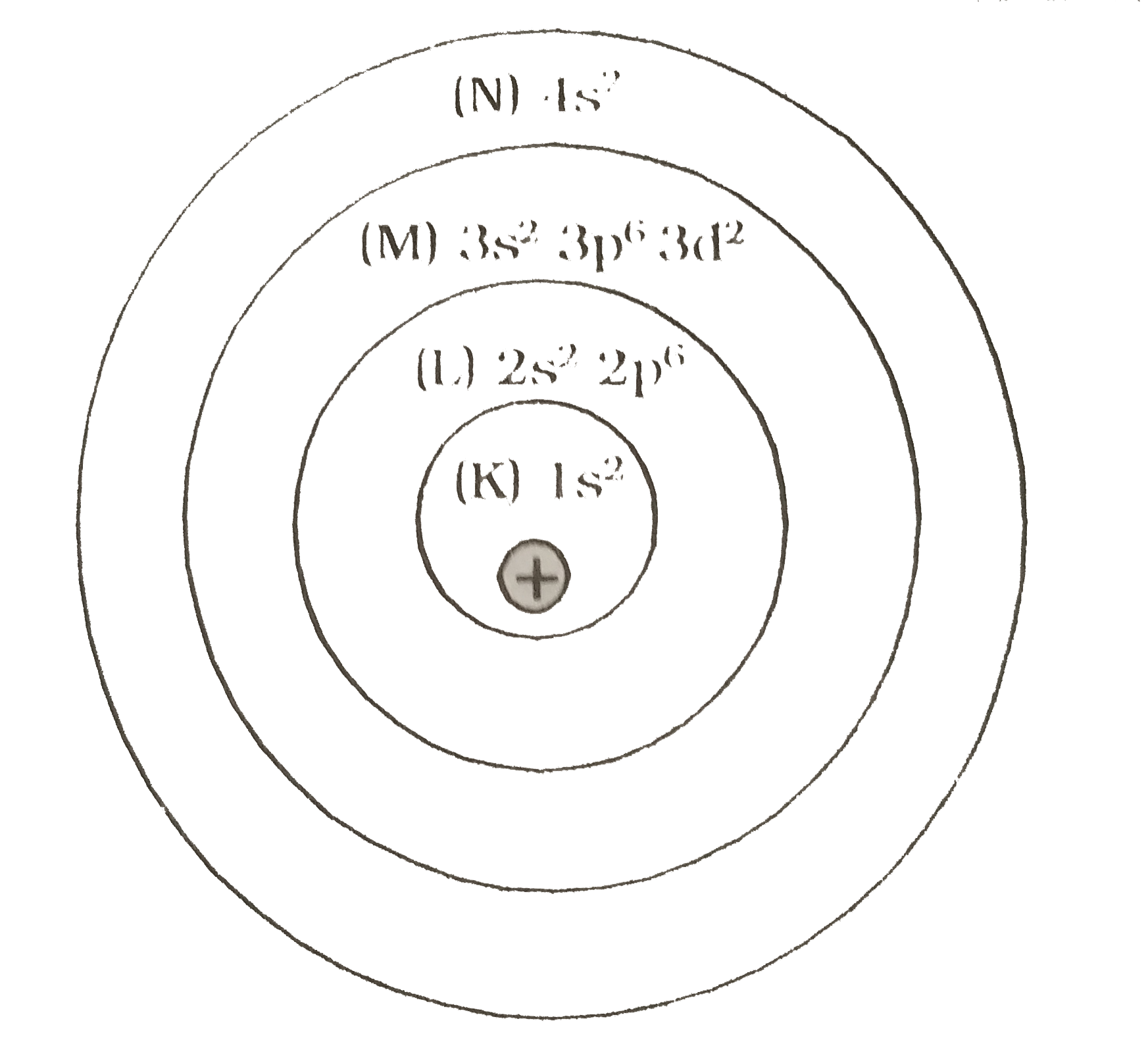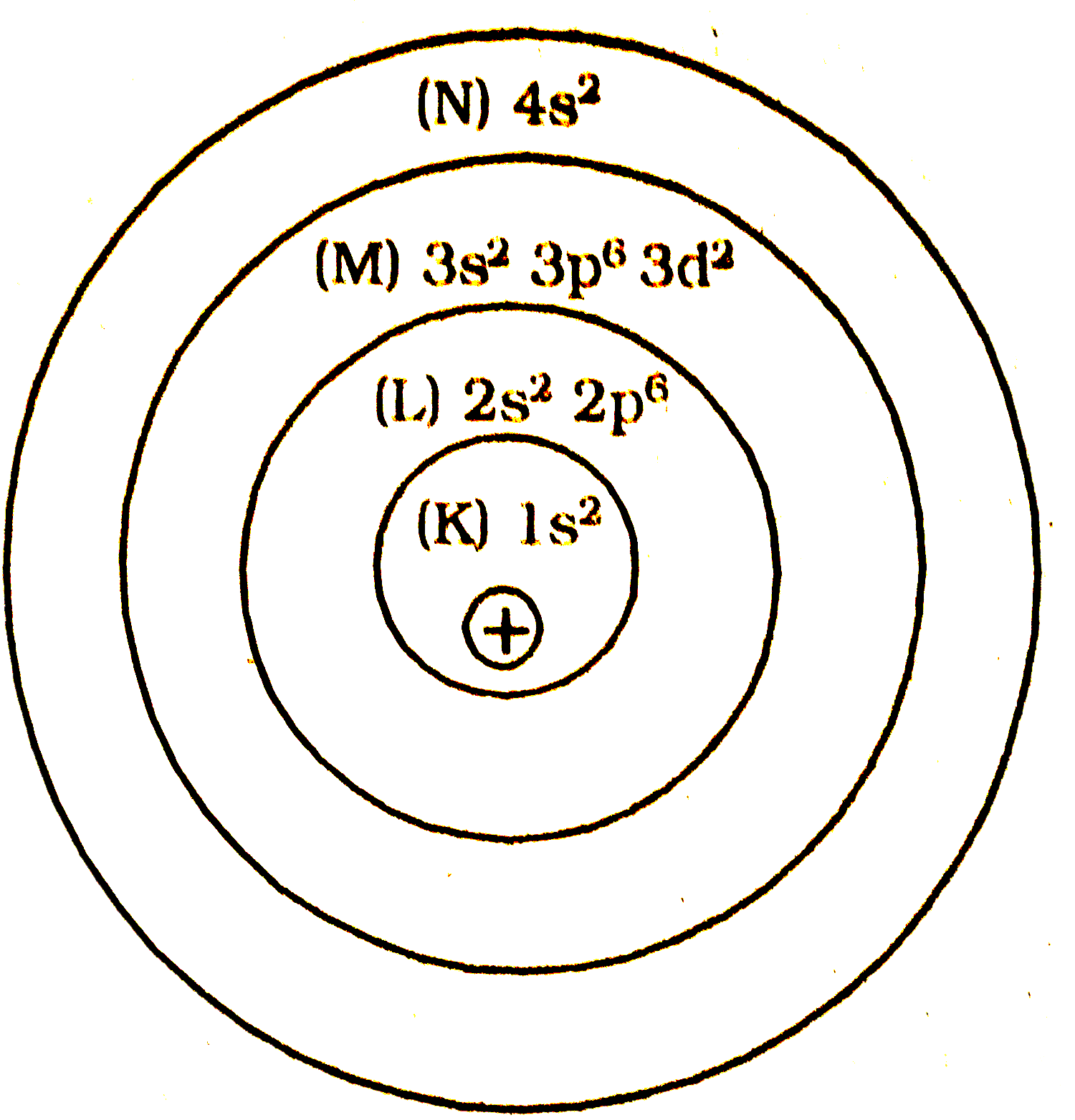Complete Solutions to TEXTUAL LESSON PART ( CONCEPTUAL UNDERSTANDING ) of chapter STRUCTURE OF ATOM of Class 10 book with complete answers and questions
| Class 10 | CHEMISTRY |
| Chapter | STRUCTURE OF ATOM |
| VGS PUBLICATION-BRILLIANT | TEXTUAL LESSON PART ( CONCEPTUAL UNDERSTANDING ) |
| Number Of Questions | 21 |
| Academic Year | 2023-24 |
What information does the electronic configuration of an atom provide ?
View SolutionHow many maximum number pf electrons can be accommodated in a principal energy shell?
View SolutionHow many maximum number of electrons can be accommodated in a sub-shell ?
View SolutionHow many maximum number of electrons can be accommodated in an orbitals ?
View SolutionHow many sub-shells present in a 'M' principal energy shell?
View SolutionHow many spin orientation are possible for an electron in an orbital ?
View SolutionIn an atom the number of electrons in M - shell is equal to the number of electrons in the K and L - shell . Answer the question.
Explanation :
1) Number of electrons in K-shell `(1 s^(2)) = 2`
Number of electrons in L-shell `(2s^(2) sp^(6)) = 8`
Total number of electrons in k & L shells = 10
2) Given that number of electrons in M-shell is equal to number of electrons in K& L- shells
3) Hence number of electrons in M-shell `(3s^(2) 3p^(6) 3d^(2)) = 10`
4) But , we know that before filling of 3d orbital 4s should be filled `(4s^(2))`
5) So , electronic configuration is `1s^(2) 2s^(2) 2p^(6) 3s^(2) 3p^(6) 4s^(2) 3d^(2)`

Which is the outermost cell ?
View SolutionIn an atom the number of electrons in M - shell is equal to the number of electrons in the K and L - shell . Answer the question.
Explanation :
1) Number of electrons in K-shell `(1 s^(2)) = 2`
Number of electrons in L-shell `(2s^(2) sp^(6)) = 8`
Total number of electrons in k & L shells = 10
2) Given that number of electrons in M-shell is equal to number of electrons in K& L- shells
3) Hence number of electrons in M-shell `(3s^(2) 3p^(6) 3d^(2)) = 10`
4) But , we know that before filling of 3d orbital 4s should be filled `(4s^(2))`
5) So , electronic configuration is `1s^(2) 2s^(2) 2p^(6) 3s^(2) 3p^(6) 4s^(2) 3d^(2)`

How many electrons are there in its outermost shell ?
View SolutionIn an atom the number of electrons in M - shell is equal to the number of electrons in the K and L - shell . Answer the question.
Explanation :
1) Number of electrons in K-shell `(1 s^(2)) = 2`
Number of electrons in L-shell `(2s^(2) sp^(6)) = 8`
Total number of electrons in k & L shells = 10
2) Given that number of electrons in M-shell is equal to number of electrons in K& L- shells
3) Hence number of electrons in M-shell `(3s^(2) 3p^(6) 3d^(2)) = 10`
4) But , we know that before filling of 3d orbital 4s should be filled `(4s^(2))`
5) So , electronic configuration is `1s^(2) 2s^(2) 2p^(6) 3s^(2) 3p^(6) 4s^(2) 3d^(2)`

What is the atomic number of element ?
View SolutionIn an atom the number of electrons in M - shell is equal to the number of electrons in the K and L - shell . Answer the question.
Explanation :
1) Number of electrons in K-shell `(1 s^(2)) = 2`
Number of electrons in L-shell `(2s^(2) sp^(6)) = 8`
Total number of electrons in k & L shells = 10
2) Given that number of electrons in M-shell is equal to number of electrons in K& L- shells
3) Hence number of electrons in M-shell `(3s^(2) 3p^(6) 3d^(2)) = 10`
4) But , we know that before filling of 3d orbital 4s should be filled `(4s^(2))`
5) So , electronic configuration is `1s^(2) 2s^(2) 2p^(6) 3s^(2) 3p^(6) 4s^(2) 3d^(2)`

What is the atomic number of element ?
View SolutionRainbow is an example for continuous spectrum - Explain
View SolutionHow many elliptical orbits are added by Sommerfeld in third Bohr's orbit? What was the purpose of adding these elliptical orbits ?
View SolutionWhat is absorption spectrum?
View SolutionWhat is an orbital? How is it different from Bohr's orbit ?
View SolutionExplain the significance of three quantum numbers in predicting the positions of an electron in an orbit .
View SolutionWhat is `n l^(x)` method ? How is it useful ?
View SolutionFollowing orbital diagram shows the electronic configuration of nitrogen atom. Which rule does not support this ?

View SolutionWhich rule is violated in the electronic configuration `1s^(0) 2 s^(2) 2p^(4)` ?
View SolutionWrite the four quantum numbers for the differentiating electron of sodium (Na) atom.
View SolutionWhy there are exemptions in writing the electronic configurations of Chromium and Copper ?
View SolutionWhat is emission spectrum?
View Solution
TEXTUAL LESSON PART ( CONCEPTUAL UNDERSTANDING ) questions and complete solutions for chapter STRUCTURE OF ATOM of VGS BRILLIANT CHEMISTRY (TELUGU ENGLISH) of Class 10
All Exercises from VGS PUBLICATION-BRILLIANT Class 10 CHEMISTRY STRUCTURE OF ATOM
- ACTIVITIES
- CREATIVE QUESTIONS FOR NEW MODEL EXAMINATION ( SECTION - I 1/2 MARK QUESTIONS)
- CREATIVE QUESTIONS FOR NEW MODEL EXAMINATION ( SECTION - II 1 MARK)
- CREATIVE QUESTIONS FOR NEW MODEL EXAMINATION ( SECTION - III 2 MARKS QUESTIONS )
- CREATIVE QUESTIONS FOR NEW MODEL EXAMINATION ( SECTION - IV 4 MARKS )
- QUESTIONS GIVEN IN THE LESSONS ( 1 MARKS QUESTIONS)
- QUESTIONS GIVEN IN THE LESSONS ( 2 MARKS QUESTIONS)
- QUESTIONS GIVEN IN THE LESSONS ( 4 MARKS QUESTIONS)
- TEXTUAL LESSON PART ( ASKING QUESTIONS AND MAKING HYPOTHESIS)
- TEXTUAL LESSON PART ( CONCEPTUAL UNDERSTANDING )
- TEXTUAL LESSON PART ( FILL IN THE BLANKS)
- TEXTUAL LESSON PART ( INFORMATION SKILLS AND PROJECTS)
- TEXTUAL LESSON PART ( MULTIPLE CHOICE QUESTIONS)
- TEXTUAL LESSON PART (APPLICATION TO DAILY LIFE , CONCERN TO BIODIVERSITY)